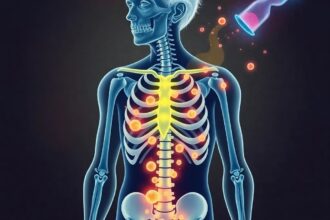Explore the myth of ‘starvation mode’ and its effects on metabolism during caloric restriction, backed by scientific studies.
Unravel the science behind ‘starvation mode’ and its implications for metabolism and weight management.
Introduction to ‘Starvation Mode’
The term ‘starvation mode’ often surfaces in discussions about dieting and metabolism, implying that the body drastically slows its metabolic rate in response to caloric restriction. But is this phenomenon backed by science, or is it more myth than reality?
The Science of Adaptive Thermogenesis
Adaptive thermogenesis is the scientific term frequently associated with ‘starvation mode’. According to a study published in the journal Metabolism – Clinical and Experimental, adaptive thermogenesis refers to the decrease in energy expenditure beyond what would be predicted based on body weight and composition alone, often occurring during sustained caloric restriction (Rosenbaum & Leibel, 2010).
This metabolic adaptation can make weight loss more challenging. The body reduces its metabolic rate as a protective mechanism, conserving energy due to the perception of insufficient caloric intake. This survival instinct can indeed result in a slower than expected weight loss, misleading individuals to believe they are in ‘starvation mode’.
Identifying Symptoms of Metabolic Slowdown
Some signs might suggest a metabolic slowdown: fatigue, feeling cold more often, or stalled weight loss. The key is to distinguish between these symptoms resulting from normal dieting adjustments and significant metabolic adaptations.
Dr. Michael Schwartz from the University of Washington explains in an interview with Healthline, “While it’s common to experience temporary fluctuations, persistent symptoms should be addressed with dietary adjustments or medical advice.”
Addressing Challenges Through Nutrition and Exercise
One way to counteract these metabolic adjustments is through strategic nutritional planning and exercise. Incorporating strength training along with a balanced diet rich in nutrients can help maintain muscle mass and metabolic rate.
Government health resources like the USDA’s National Nutrient Database emphasize the importance of sufficient protein intake, which can aid in preserving lean muscle mass during weight loss efforts.
Conclusion: Fact or Fiction?
While the impact of caloric restriction on metabolism is real, ‘starvation mode’ as a dramatic metabolic slowdown is often misunderstood. Recognizing adaptive thermogenesis and addressing its effects through informed dietary and exercise strategies can mitigate its impact. As with any health-related matter, utilizing reputable sources and expert advice is crucial for understanding personal metabolic responses.




